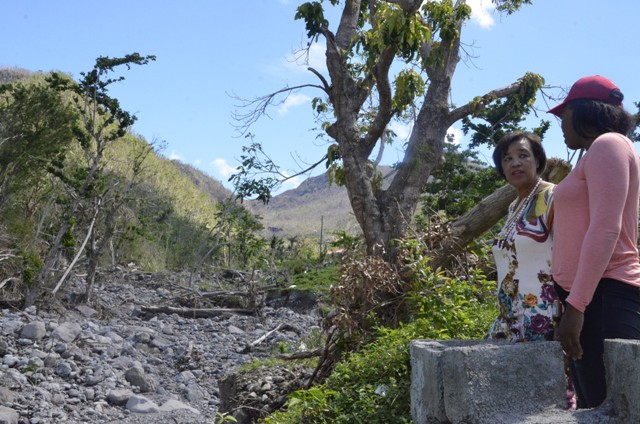 Commonwealth Secretary-General Patricia Scotland visits her native Dominica following Hurricane Maria. [photo: Commonwealth Secretariat]
Commonwealth Secretary-General Patricia Scotland visits her native Dominica following Hurricane Maria. [photo: Commonwealth Secretariat]
[This is an excerpt from an article in the current edition of The Round Table: The International Journal of International Affairs. Opinion pieces do not reflect the position of the Round Table Editorial Board.]
The region was hard hit by the 2008 Great Recession and had not yet fully recovered. Some islands also had received heavy blows from recent hurricanes Dorian (2019) and Maria (2017).
When the unexpected novel coronavirus emerged, responses were mixed. Being separate, independent countries, policies differed slightly, but all generally followed the international lockdown protocols. Reaction times varied, however. In January, for example, in Trinidad and Tobago, although Covid-19 was officially declared a threat, the Opposition’s calls for debate and action on the matter were shut down in Parliament on five occasions, and the country’s international Carnival celebrations were held as usual.
Eventually, every island did impose a level of lockdown, some more drastic than others. St. Vincent and the Grenadines, for instance, had only one movement restriction (border closure and control), while Trinidad and Tobago eventually implemented one of the highest number of movement restrictions (eleven, both internal and external controls), with Jamaica topping the region (thirteen).
This did result in some intra-island government tension when Trinidad and Tobago refused to accept its returning citizens, and Barbados (with two restrictions) offered them refuge for a little over one month, amidst much uncertainty.
It was feared that the pandemic would spread in these tiny islands and hospitals would be overwhelmed. Five months into the pandemic and the statistics show that this did not occur anywhere. Five islands (Dominica, Grenada, St. Kitts and Nevis, St. Lucia, and St. Vincent and the Grenadines) have had zero coronavirus deaths. (Populations ranged from 52,441 to 181,889.) The highest number of such deaths (eleven) was found in the Bahamas.
In total, out of a population of 6.8 million people, there have been 50 coronavirus-related deaths. It would be fair to say, then, that this has not been a major health crisis for the region. Annual hurricanes and other diseases have taken a much greater toll on human life.
Where the effect of the coronavirus crisis will be most felt is in terms of economic impact. Locking down the economy for two months or more, along with social distancing measures, may result in many businesses, even industries, closing permanently. Job losses will be high. Since much of the regional economy is informal – in terms of individual livelihoods – the official statistics may not capture the full effect of the devastation.
The region’s economies were already the most highly indebted in the world (averaging 68.5% of GDP in 2019), and most do not have access to concessionary financing because of their income levels. Spending between 1% and 4% of GDP to deal with the crisis, they may be more indebted afterwards. It is projected that 2020 will see the largest economic contraction since 1930 for the region (with the exception of Guyana, because of recent discoveries of large oil and gas reserves there).
Projected declines in the international tourist industry, the global oil industry, and the disruption of global supply chains on these highly import- and export-dependent societies are sure to have significant effects.
The question of re-building – in some sectors, building for the first time – local economies, and how to fit them into the new emerging international economy becomes an issue that needs to be on the front burner in each country, and the region as a whole.
Kirk Meighoo is a Political Analyst and Multimedia Broadcaster in Trinidad & Tobago.



